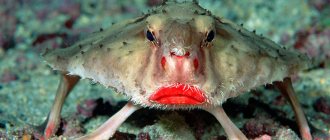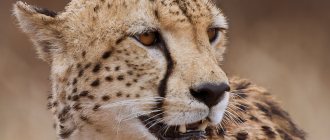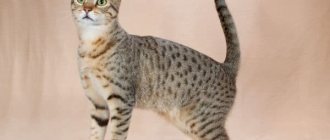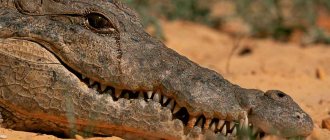The family of these cute, charming, and sometimes cheeky animals is very, very extensive. Due to their omnivorous nature and ability to quickly adapt to almost any climatic conditions, raccoons have been successfully introduced on all continents of our planet and have become many independent subspecies.
So, here are how many species of raccoons there are (main branches):
- Raccoons
- Raccoon-eating raccoons
- Cozumel raccoons
The last species of raccoons is the smallest. These animals live only in Mexico. They have very fluffy fur and a luxurious striped tail. The Cozumel raccoon lives a solitary life ; this animal is not domesticated, although all types of raccoons are capable of living next to humans.
Crayfish inhabit vast areas of South, Central and North America. This species of raccoon received its nickname for its predilection for crustaceans. Crayfish eaters love crabs, lobsters and all kinds of shellfish. Raccoon-eating raccoons are often domesticated. They are used to hunt small rodents and other agricultural pests.
The striped raccoon is the most numerous species of raccoon. The striper can be found in both Americas, and in Europe, and in Asia, and in Africa, and even in Australia. This animal is called the American raccoon, since initially, this predator lived only in North America, from where at the beginning of the 20th century it was artificially introduced into the USSR, and then into many European countries. In Germany, raccoons were bred with the blessing of Goering (an important figure of the Third Reich).
Raccoons are highly domesticated. This subspecies of raccoon is prized for its predilection for eating rodents and reptiles. Gargles are good at clearing the area of poisonous snakes and dangerous reptiles.
This is how many species of raccoons are found in nature.
What animal is with a striped tail?
Ring-tailed lemur, for example, but in general there are quite a few of them.
The red panda or red panda has a striped tail.
The raccoon also has a striped tail.
Adorable lemurs have a striped tail.
An ordinary domestic cat may also have a tabby tail.
Animals in nature are very beautiful and intelligent. It's always nice to admire them!
A striped tail looks very beautiful and elegant, so it is not surprising that among animals there are many fans of this coloring. First of all, I remember, of course, the tiger, the largest land predator with a beautiful striped tail:
Ring-tailed lemurs boast a very long tail with black and white stripes:
Of course, we can’t forget about the raccoon, a creature with a very cute face and very clean:
Stripes on the tail are also found on the red panda, although not always:
Striped tails are also not uncommon in ordinary domestic cats:
An animal called Nosuha also has a striped tail:
And according to many scientists, some dinosaurs could also have striped tails:
There are animals with striped tails, and there are many of them. For example: Raccoon, Lemur cat, cat, you can also call a tiger, he himself is striped and has a tail too, Pandas, and there are many such varieties of animals. They are all beautiful and love to show off their tails.
Here are some other animals with striped tails that haven't been mentioned yet:
ZEBRAS not only have a striped body, but also a striped tail:
By the way, birds can also have striped tails. For example, FALCON :
I would venture to guess that the parrot will have problems with his balance for a while, but he should adapt quickly. The absence of tail feathers should not affect his health. Over time they will grow back. I judge from my parrot, which periodically pulls out its tail feathers one at a time, but this does not make its tail “bald.”
Well, please teach the girl how to deal with her little brothers. It's a pity for the bird.
By the same principle, an armadillo curls into a ball; it is no coincidence that Kipling added both of them into one story.
In animal life, tails perform mechanical, physiological, and communicative functions . With the help of their tails they move, jump, sit and swim, and also attract individuals of the opposite sex.
Monkeys, for example, use their tails to climb and jump trees.
Tails help little elephants stay in a group.
A kangaroo uses its tail to maintain its balance while jumping.
And the peacock attracts females with its gorgeous tail.
Source
Three-toed jerboa
Inhabits North Africa, the southern part of Eastern Europe, Asia, Kazakhstan, the extreme south of Siberia to Northeast China and Mongolia
Tail length - 30 cm.
The jerboa's muzzle is elongated and blunt. The head is very large in relation to the body. The ears are wide, tubular and relatively long. The tail is approximately twice as long as the body. The hind limbs are three-toed. The length of the foot in most species is about 42% of the body length. The pads are small, not divided into lobes. The brush on the underside of the toes of the hind limb is well developed.
The hair is thick and soft. The head and back are sandy with a slight dark streakiness. The belly is pure white. The vibrissae are thick and long.
General characteristics of the Raccoon family
Most raccoons live in tropical and subtropical regions of America. The red panda is found in Asia. Of the entire family, only the raccoon is acclimatized in Europe.
Appearance Features
Raccoons are medium-sized mammals with an elongated flexible body, the average length of which ranges from 30 to 70 cm and weight 4-7 kg. All members of the family have long, striped tails (only the kinkajou has a tail without stripes) and markings on the face (from a black mask in raccoons to white spots in noses and kakimitsli). The color of the animals' fur varies from gray to bright red or brown.
Raccoons usually have elongated muzzles, with the exception of the kinkajou, whose muzzle is shortened, but has a very long tongue, with the help of which the animal extracts nectar from flowers.
Raccoons have 5 toes on each paw, with the third toe being the longest. These animals are plantigrade - they move by stepping on their entire foot. Their claws are non-retractable, except for the red panda and kakimitsli, whose front paws are equipped with semi-retractable claws.
Lifestyle
All raccoons, except for noses, are nocturnal. Some members of the family are solitary animals, others, for example, the same noses, live in large groups. However, what is common is that all species are characterized by complex relationships within the group and between the sexes.
Diet
Raccoons are classified as carnivores, but they are not specialized predators. A variety of fruits is the basis of the diet of most of these animals. However, there are species that prey on insects and small mammals.
Raccoon
The most famous of the raccoons (especially to those who often visit stores selling fur coats) is the striper, or washer, as furriers and Germans call it. They nicknamed him the gargle for his strange habit - to “wash” all his food and various inedible objects in water, when it is nearby.
He rinses, rubs, lowers, and again catches with his front paws everything he wants to eat, so carefully and for a long time that you can’t call it a random whim. But what biological meaning this has is unclear. Some raccoons in captivity even wash their newborn cubs, and so senselessly diligently that they sometimes die after being “washed.”
Representatives of the raccoon family
Subfamily Procyoninae
This subfamily includes 7 species of raccoons proper (genus Procyon), 3 species of raccoons in 2 genera (Nasua and Nasuella) and 2 species of raccoons (genus Bassariscus). Let's get to know them better.
Raccoons
Raccoons have learned not only to survive, but also to thrive near humans. In their homeland in North America, these cute little animals plunder trash cans, raid homesteads, and even sneak in and out of houses at will. Most townspeople chase away uninvited guests not only because they want to avoid noise and disorder, but also because they are afraid that raccoons will infect their pets with rabies.
Some people take young animals into their homes as pets, but as they age, the behavior of raccoons changes dramatically under the influence of hormones, so even the most persistent owners often prefer to part with them.
The raccoon has a dense build, the weight of adults is 5-8 kg. The animal is easily recognized by its sharp muzzle, similar to a fox, a black mask passing through the eyes, and a long striped tail.
Raccoons are excellent tree climbers. They use hollow trees, nests in bushes, old buildings, attics, haystacks, stacks of firewood, etc. as shelters.
Raccoons are most active from sunset to midnight. They feed near rivers, lakes and swamps, where they look for mollusks, crayfish, fish, aquatic insects and other prey.
In the northern part of the USA and southern Canada, in winter the animals become lethargic, although they do not fall into real hibernation. They can remain in the shelter for a month or more until the night temperature rises above 0° C.
Raccoon
The most famous representative of the raccoon family. It is common in the USA and southern Canada, and introduced into some countries in Europe and Asia. Occupies a wide variety of habitats.
The color of the coat is grayish-gray, sometimes lighter or reddish; the tail is striped with alternating black and brown stripes. The black mask on the face is emphasized by gray stripes above and below. You can learn more about the striped raccoon from this article.
Crabeater raccoon
Found from Costa Rica south to northern Argentina.
The fur is shorter, coarser, has a yellowish-reddish tint, and the tail is longer than that of the striped raccoon.
Cozumel raccoon
Found in Mexico, on the island of Cozumel, in Yucatan.
The smallest of all raccoons (weighs no more than 3-4 kg). Differs in less dense wool. The species is threatened with extinction.
Guadalupe raccoon
Inhabits the island of Guadeloupe. It has a less bright coat color.
Bahamian raccoon
Lives on the Nassau Islands, Bahamas.
Tresmarias raccoon
Found on the island of Maria Madre, Mexico. Its fur is shorter, coarser and lighter in color than that of its cousin, the striped raccoon. This species is threatened with extinction.
Barbados raccoon
Inhabited in Barbados. It differed from its brothers in having darker fur. Currently extinct.
Nosukhi
Noses are found in a variety of biotypes, including tropical lowlands, arid highland forests, oak forests, forest edges, and prairies.
The muzzle of the nose is long and mobile, its tip extends far beyond the lower jaw. Many muscles give the nose special flexibility, which allows the animal to examine various recesses for prey.
Nosukhi lead a diurnal lifestyle. Almost all the time they are busy combing the forest floor in search of food, stirring up leaves and hastily looking for insects or fruits. Their long nose and strong claws help them find food.
Common nose
This species is common in the forests of South America, in the eastern Andes, Argentina and Uruguay.
The coat is reddish-brown, with small light spots above and below the eyes, and a larger white spot on the cheeks and throat; the belly is white, the legs are darker than the main color, the tail is decorated with dark rings.
Conservation of raccoons in nature
Some raccoons have high numbers, others (olingo, kakimitsli, red panda) are rare or vulnerable species: due to the destruction of the forests where they live, these animals are becoming less and less numerous.
While the raccoon's numbers are constantly growing and its range is expanding, the island species is listed as endangered by the IUCN.
The common nose is not in danger of extinction at this time - it is considered a common species. However, the mountain nosoha suffers from the destruction of forests and human use of land, which has become a rare species today.
Onagadori
Onagadori is a long-tailed ornamental Japanese chicken. It is sometimes called the phoenix or Yokohama chicken.
On average, the length of the tail is about 10 meters, and per year it grows by almost a meter. The longest tail of a rooster is 13 meters.
The neck of the onagadori is covered with graceful long feathers that reach all the way to the back; they are not wide and hard to the touch.
Ring-tailed lemur
Kingdom:
| Scientific classification | |
| Animals | |
| Type: | Chordata |
| Class: | Mammals |
| Infraclass: | Placental |
| Squad: | Primates |
| Suborder: | Wet-nosed |
| Infrasquad: | Lemuriformes |
| Family: | Lemuridae |
| Genus: | Lemur |
| View: | Ring-tailed lemur |
Ring-tailed lemur
or
ring-tailed lemur
(lat.
Lemur catta
) is the most famous species of the lemur family.
This species is in its own genus, although many experts place it in the genera Eulemur
or
Hapalemur
. Belongs to the suborder of wet-nosed primates. The Madagascar name for the ring-tailed lemur is maki.
Appearance
These are slender animals, comparable in size to cats. The body length is from 38 to 45 cm, and the black and white striped tail ranges from 55 to 62 cm, weighs more than 5 kg. On the back, the fur is gray, sometimes pinkish-brown, the limbs are gray, the head and neck are dark. gray. The belly and inside of the paws are white, the muzzle is white with dark triangular spots around the eyes and a black nose. The tail has 13 black and white stripes. The long tail serves ring-tailed lemurs for signals between relatives, as a distributor of odors, and also for maintaining balance when climbing and jumping. The weight of ring-tailed lemurs can reach 3.5 kg, with a tail of more than 1.5 kg.
Astrapia
The astrapia is a bird native to the subalpine forests of the western central highlands of New Guinea. Astrapia is also called the bird of paradise. It is medium in size, up to 32 cm long. The plumage of males is olive green and bronze. There are two long tail feathers that are white. The female is brown in color with a rainbow head. Males are polygamous.
The tail length can exceed 1 m in males.
Behavior
Of all the lemurs, ring-tailed lemurs spend the most time on the ground, an adaptation to a partially arid environment. Ring-tailed lemurs are active at night and lead a very social lifestyle. They are found in groups of 20 to 30 individuals. There is a strict hierarchy within the groups; the leaders are mainly females. They have preferential rights in choosing food and a partner. While females usually remain in the groups they were born into, males move to new groups repeatedly. The family group ranges from 15 to 57 acres. Every day, lemurs walk around their territory in search of food. They show aggression towards strangers. Ring-tailed lemurs willingly sit in the sun and enjoy its warmth, spreading their arms to the sides.
Reproduction
The mating season is strictly seasonal, starting in mid-April. Ring-tailed lemurs give birth to one baby at a time, and twins are occasionally encountered. The offspring are usually born between August and October, at the beginning of the rainy season. Females reproduce annually, the duration of pregnancy is approximately 222 days, and the weight of the cub at birth is from 80 to 120 g. The newborn grabs onto the mother’s fur and hangs on it. In the first months, females carry their cubs on their stomachs, later on their backs. At the age of 1-2 months, the cub begins to leave the mother's back and makes independent forays, returning to the mother during sleep and feeding, and at the age of 5-6 months they become independent. After five months they wean themselves off milk. Females reach sexual maturity at the age of 20 months, males at the age of two and a half years. The lifespan of ring-tailed lemurs ranges from 34 to 37 years.
Kinkajou
The kinkajou is a small animal, gray-red, with a long, prehensile tail. The tail is its most remarkable feature. Only the binturong, a South Asian animal from the civet family, has a tail so capable of firmly grasping branches. None of the predators have any more.
The kinkajou is very similar to the olingo, but is distinguished by its prehensile tail. Kinkajou and the South Asian binturong from the civet family are the only predatory animals endowed with a tail capable of grasping branches.
The kinkajou's tongue is also notable, it is long and thin. That tongue can squeeze into any gap and extract as much honey as the animal wants. Honey and fruits are his delicacy. But the prehensile-tailed raccoon also destroys bird nests and, on occasion, eats various small animals. Kinkajou is good-natured and playful. It gets used to people quickly; tame kinkajous often live in Indian villages. The second name of this animal is potto. This is also the name of a lemur in Africa, potto, which is a strange thing! - looks a little like a kinkajou, although it is not at all related to it.











